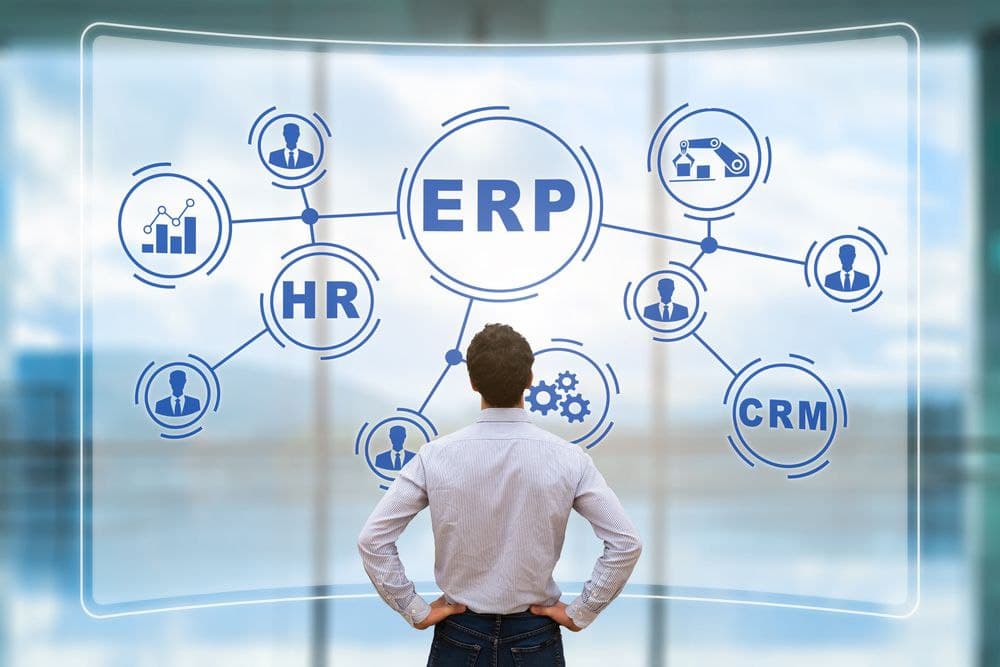ERP Assets Management Overview
“asset management” is generically defined as work that focuses around the maintenance of a business’ fixed assets—things like manufacturing components, vehicles, plants, etc. Examples include replacing broken infrastructure on the manufacturing floor, determining a downtime schedule to inspect or completely replace components when their lives have been completed, and renovating or building new plants to increase production efficiency.
ERP has long been a part of the asset management space. This allowed users to perform inspections, preventative maintenance, and repairs
ERP Asset Management is providing organizations with the tools to create and implement maintenance procedures for both assets and rebuildable inventory items. Maintenance procedures are an integral part of an organization’s complete asset lifecycle management strategy, enabling an organization to optimize asset utilization. ERP enables users to optimally plan and schedule maintenance activities with minimal disruption to an organization’s operations or production. Importantly, it improves resource efficiency, enhances maintenance quality, tracks work history, and records all maintenance costs.
ERP tracks the performance of assets (including rebuildable, inventory items) using meters, quality plans, and condition monitoring systems. By effectively monitoring an asset’s operating condition, effective preventive maintenance strategies can be implemented. In addition to creating preventive maintenance schedules, users can create alternative maintenance strategies for seasonal or production capacity changes.
ERP comprehensive maintenance functionality supports asset lifecycle strategies for asset intensive industries, including Metals/Mining, and Education. ERP eliminates the need for spreadsheets and disparate data repositories, by enabling companies to manage reactive, planned, preventive maintenance, and adopt a centralized, proactive strategy for managing asset maintenance across an enterprise.
ERP enables an organization to do the following:
Create a preventive maintenance strategy
Maximize resource availability, including both equipment and labor
Optimize scheduling and resource efficiency
Integrate with ERP Products for enterprise-wide solutions
The following topics are included in this section:
Asset Management
ERP Work Management
An asset is an entity for which users can report problems. ERP provides the flexibility to address the many types of assets.
By first establishing asset groups, you can define assets and asset characteristics that can be inherited by the assets belonging to that group. Virtual assets can be designed to create a network of assets or routings. This combines several assets to a single work activity.
ERP enables you to quickly identify plants and facilities , You can view details of an asset, such as cost, hierarchal (parent/child) information, and launch transactions. You can also view current or historical configurations, and work details of an asset. As rotable, inventory items of an asset are removed from and reinstalled into an asset, the asset genealogy and parent/child meter readings are recorded automatically. Attributes, such as cost history, bills of material, and document attachments can be associated with a specific asset.
You can view the locations of assets by using the built-in integration of web-based source map viewers of Google Maps, Assets can be geocoded and then assets and work can be displayed in the map viewer based on user-entered search criteria.
01ERP Assets Work Management
02Integration with ERP Application Products
03Equipment Calibration
04Asset Lifecycle
05Asset Inventory
06Asset Value Adjustment
07Asset Reporting
Purchasing Assets
Procuring assets is done via purchase receipts (goods received notes) or purchase invoices. The system directly creates a record for the asset, based on the information stored in the item master. Depreciation methods, schedule, insurance details, and more can be updated with a few clicks.
Selling Assets
With a few clicks, you can sell assets that you no longer need. There is no overhead of maintaining accounting books, since the system will auto-create those journal entries, keeping the process quick and seamless.
Automating Asset Depreciation
Automated asset accounting removes the hassle of manual depreciation entries. Configure depreciation schedules for various categories of assets, and watch the software auto-calculate the depreciation amount or dates and create accounting entries.
Scrapping Assets
When you no longer need an asset, you can scrap it with just one click. The accounting entries are handled by our asset management software so the process always stays smooth.


